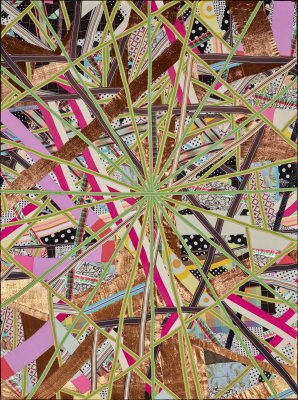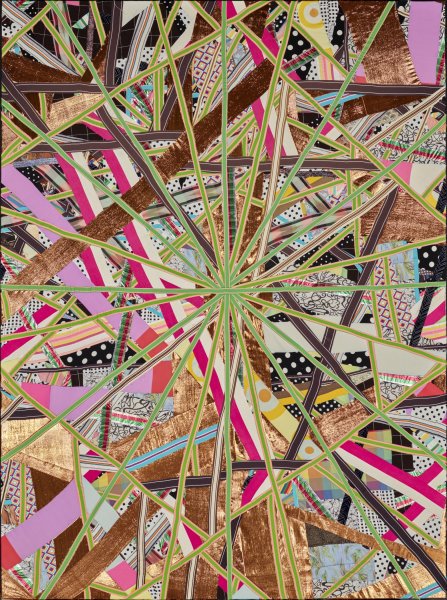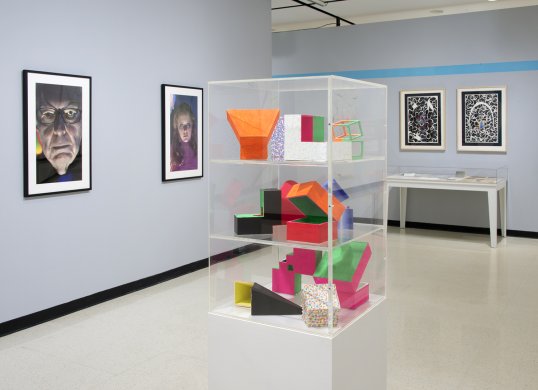Begin the artmaking activity by allowing students to choose scrap materials. You can even encourage them to bring in found materials prior to the lesson.
Using rulers, create different angles and shapes on a variety of scrap papers. Note, the use of straight lines and geometric shapes will give the artwork a clean look. Measure the shapes and lines as you draw and try to create different sized objects, including large elongated shapes. Introducing terms such as obtuse, acute, and right angles as well as reinforcing measuring skills with rulers can give this section of the activity an added math component.
When students are done drawing their shapes, have them cut them out. Students can share their shapes, swapping with one another for variety. Introduce the concept of creating a composition with their different shapes. Students will “build” their composition beginning with larger shapes to fill up surface space. Encourage students to try overlapping and layering the pieces in their assemblage. Once students have laid out their pieces, they can begin the gluing process.
When the base of their assemblages are glued and complete, discuss the aspect of the focal point in Samaras’s Reconstruction #28. Green and pink lines of ribbon converge at the central point of the work. Explain to students that their eyes are drawn to that focal point per the artist’s intention. For the final layer of their artwork, students will use one pattern or colored material to create their focal points while simultaneously creating unity in their works. To create their focal point, each student can use a long strip of paper positioned across their paper or even use a multitude of shapes that meet together. Remind students that their focal points can be at different locations in their works and do not have to be at the center of the works. Once students have arranged their focal points, they can glue down this layer.
Lesson Tips: This lesson can be tailored to focus on color theory. Students can create analogous, complementary, or even primary collages using a limited color palate.


